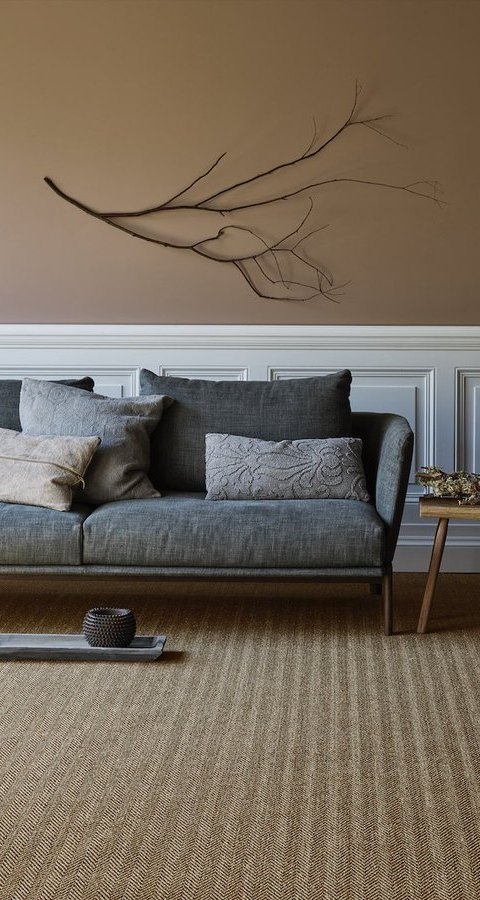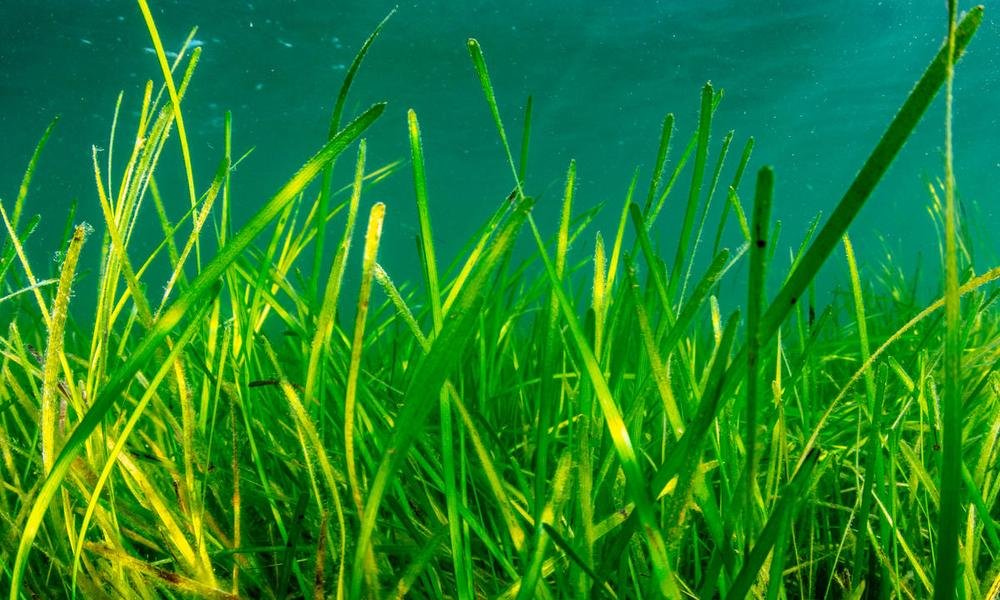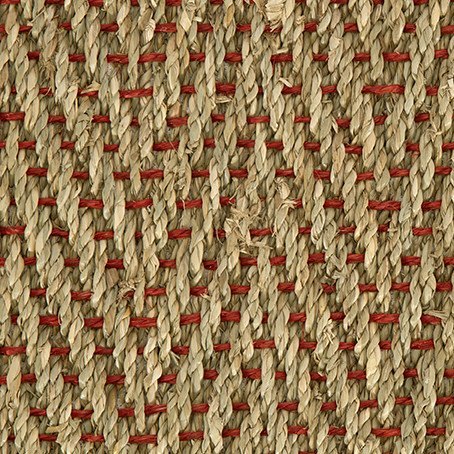Natural Flooring & Rug Guide
Unlike other products for your home, our natural floor coverings offer an all-round sensory experience, from softening the sound to scenting the air, and, of course, the pleasure that comes from feeling these materials underfoot. In our showroom we offer a huge selection of natural floor coverings, including Crucial Trading, in a variety of designs, colours, textures and prices to suit every pocket. Many of our floor coverings can be delivered and fitted within two tp three weeks, so you can enjoy your new purchase in next to no time.
Visit our extensive showroom in Exeter, Devon, and experience the full Queenstreet service including free measuring and estimating, professional advice at every stage of the process and samples to take home.
We have our own flooring fitters who are probably the most experienced in the south west, and most of whom have worked for us for many years. If you are looking for a DIY service, then we can easily supply the flooring only and have it delivered within days.
Sisal
Sisal is a leaf fibre obtained from the plant Agave Sisalana of which there are many varieties. The plant is grown in a number of countries including East Africa, Brazil and China. The fibres are removed from the leaf by a process of decortications after which they are washed, dried and graded before being spun into a yarn suitable for use in a variety of end-uses, including floor coverings. Sisal is one of the strongest natural fibres and very hardwearing.
Sisal can be dyed to produce a wide range of attractive shades with generally good light fastness. However, in direct sunlight deeper shades may be affected. We have a range of sisal products in different qualities, styles and weaves including herringbone, twill, plaid and boucle. The different ranges reflect the differences in the quality of the fibre, the weave and consequently the price.
Floor coverings made with sisal are hard-wearing and can be used in a wide range of locations including domestic and some contract areas. Special care and attention must be taken when installing sisal floor coverings where high moisture levels are likely e.g. bathrooms and kitchens. In most instances sisal natural floor coverings will give excellent performance.
Sisal absorbs moisture readily and floor coverings made with sisal can shrink. Care must therefore be taken when installing the product. Sisal floor coverings should be conditioned in the area in which they are to be laid for at least 48 hours. It is recommended that the floor covering is unrolled, laid out and cut to shape but oversize by about 60mm to allow for any change in dimensions during the conditioning period.
Coir
Coir (Cocos nucifera) fibre is obtained from the husk of the nut which is the fruit of the coconut plant. The fibre is removed from the husk either by hand or mechanical processes. In the former, the coconut husks are softened in water and then pounded with stones to remove the woody portions, after which the fibres are hackled with a steel comb and dried.
In the mechanical system, the husks are quartered and placed in large water tanks to soften the husks. They are then passed through a breaker which crushes them before passing them into the next machine, the drum, where the woody part is torn out by a series of spikes leaving the long coarse fibres. The fibres are then washed, cleaned and dried and hackled before being spun into a yarn suitable for use in a variety of products including floor coverings.

It is not usual to dye coir fibre although it can be bleached to produce a creamy yellow shade.
The hand-processed coir fibre, which is considered to be superior in quality to mechanical processed fibre, is spun into yarn and then woven on hand operated looms.
Floor coverings made with coir are as hard wearing as sisal and can be used in a variety of both domestic and light contract areas. It should be noted that bleached Coir can revert to its natural colour when exposed to bright sunlight.
Coir is a hygroscopic fibre and can absorb water under humid conditions so it is advisable to avoid areas of high moisture. Coir reacts to moisture by expanding which can lead to the floor covering wrinkling and buckling. When discharging moisture coir shrinks.
Coir floor coverings should be conditioned in the area in which they are to be laid for at least 48 hours. It is recommended that the floor covering is unrolled, laid out and cut to shape but oversize by about 60mm to allow for any change in dimensions during the conditioning period.
Seagrass
As its name implies seagrass is a grass, which is grown in China and Vietnam in paddy-like fields. During the growing cycle the paddy fields are flooded with sea water. After harvesting, seagrass is dried and converted into a yarn which is suitable for weaving into a variety of designs. The product is then backed with a latex compound to produce a hard-wearing natural floor covering.

Seagrass is a hard impermeable fibre which is not possible to dye by conventional techniques so that most products are supplied in the natural coloured state or with the addition of a coloured yarn such as sisal.
Seagrass is a natural, stylish and hardwearing floor covering. There is a selection of different woven designs in our range, from the original natural colour to various designs with a natural seagrass warp and different coloured sisal weft yarns.
Seagrass floor coverings are naturally stain-resistant, anti-static and hard-wearing and can be used in most domestic locations and some light contract areas. However, in areas of heavy foot traffic or where castor chairs are used, the use of loose-laid mats or protective pads for added protection is recommended. Seagrass, due to its slippery texture, is not recommended for stairs.
Seagrass is a natural product, and it is possible that if laid in areas of high humidity or dampness, mould or mildew can form on the fibre. Normally, this can be brushed off when it is dry. In exceptional cases, the mould or mildew can be treated with a weak solution of bleach or a sterilising fluid such as Milton. If the dampness persists, then mould and mildew may reappear.
Seagrass floor coverings should be conditioned in the area in which they are to be laid for at least 48 hours. It is recommended that the floor covering is unrolled, laid out and cut to shape but oversized by about 60mm to allow for any change in dimensions during the conditioning period.

Bamboo
Weight-for-weight bamboo is stronger than steel and is one of the toughest and fastest growing plants on the planet. Technically, bamboo is a grass, but some varieties, such as the Giant Timber Bamboo, can grow as high as 30m. With thousands of uses around the world, including food, paper, construction material and medicines, bamboo truly is an amazing plant. In fact, ancient Chinese people used to say that a life spent mastering bamboo is a good life!
Bamboo can be stained to give a variety of different shade options. We offer a selection of these to give a natural or contemporary feel to any home.
Through a process of sewing together narrow strips of bamboo and applying a natural felt backing, we can offer a collection of bamboo rugs. With a wide selection of borders available, these rugs can be tailor-made to complement any contemporary or traditional home.
Bamboo is also finished with a matt lacquer to further enhance its moisture tolerance whilst providing a very hard-wearing surface seal.
These durable products can be used in any domestic location, even in areas of higher humidity (such as kitchens and bathrooms), where other natural products and even standard wooden flooring would not be suitable.
Jute
Jute is a bast fibre which comes from the inner bark of plants of the genus Cochorous. The plant is a herbaceous annual which flourishes in hot damp regions of Asia. The main producing countries are Bangladesh and India. The plant grows to a height of over 3m with a stalk diameter of 3cm. After harvesting, usually by cutting with a hand sickle, the stalks are retted by being steeped in a sluggish moving stream of water until the fibre can easily be removed from the stalk. In recent years a considerable amount of research has been carried out on mechanical techniques in retting tanks.
The removed strands of fibre, up to 2m long, are washed and dried in the sun and then baled and sent to the spinning mills where they are spun into yarns for use in a variety of products including floor coverings. Jute has a silky lustre and varies in colour in a wide range of natural shades.
Bright and relatively fast shades can be obtained using Azoic or Vat dyes. However, it is advisable to avoid putting jute floor coverings in areas of bright sunlight e.g. in front of patio windows.
We offer a selection of jute floor coverings including fineweave herringbone and boucle in natural shades.
Floor coverings made with jute are not as hard-wearing as some of the other natural plant fibres but it has a softer handle which can be more pleasing to some tastes. When treated with respect jute floor coverings with their natural colour can be used to great effect in the home. It is advisable to avoid laying jute products in areas of heavy wear such as hallways, busy living rooms and stairs.
Jute is an unusually hygroscopic fibre and can absorb water under humid conditions so it is advisable to avoid areas of high moisture. Floor coverings made with jute can shrink and care must therefore be taken when installing the product.
Jute floor coverings should be conditioned in the area in which they are to be laid for at least 48 hours. It is recommended that the floor covering is unrolled, laid out and cut to shape but oversize by about 60mm to allow for any change in dimensions during the conditioning period.
Rugs
As well as a bespoke rug making service using natural floor covering we also stock a huge range of traditional and contemporary rugs of all sizes ready to take away.
We specialise in Oriental and Persian rugs as well as more modern designs of wool rich rugs suitable for all budgets.
Visit our showrooms to see the breathtaking display of floor coverings.
Caring for your natural flooring
This information deals specifically with natural plant fibres, and although the methods can be used for the care and maintenance of wool products, other conventional methods can also be used on the wool range.
To ensure that natural floor coverings keep their appearance, it is necessary to maintain a regular cleaning routine, including the immediate attention to any spillages. Due to their nature, some natural fibre floor coverings, e.g jute and sisal (particularly the lighter shades), are prone to water marking when water is spilt onto them. To minimise the problem of aqueous borne stains and also to improve the overall staining properties of the product, we recommend that natural floor coverings are stain treated at the factory prior to despatch.

The use of a barrier mat, e.g. coir at the entrance to premises greatly reduces the amount of dirt being walked into an area. Natural floor coverings are extremely absorbent and should therefore only be used indoors and away from areas of excessive moisture. Under no circumstances should they be wet shampooed or wet cleaned.
It is easier to remove surface dirt from a floor covering than embedded dirt. A light cleaning with a non-beater bar vacuum cleaner will remove surface dirt before it becomes embedded in the floor covering. Because of their latex backing, which prevents dust and dirt build-up beneath the floor covering, natural fibre floor coverings offer fairly easy and basic maintenance and cleaning.
We recommend a suction cleaner without beater bars since the latter can cause some damage to the surface of the floor covering. In cases of heavy soiling with mud etc. the soil should be allowed to dry, then using a stiff brush along the weave structure, brush the soil and then vacuum with the suction cleaner.
Jute products or light coloured floor covering are not recommended for areas susceptible to soiling or heavy use.
For general cleaning, it is recommended that all areas fitted with natural floor coverings be given a thorough vacuum at least once a week using a non-beater bar suction type cleaner.
In the case of severe spillages a suitable spot cleaning kit is recommended. The kit should come complete with cleaning solutions, applicators and full instructions. Prompt action when dealing with spillages will minimise staining. We can provide a suitable cleaning kit.
